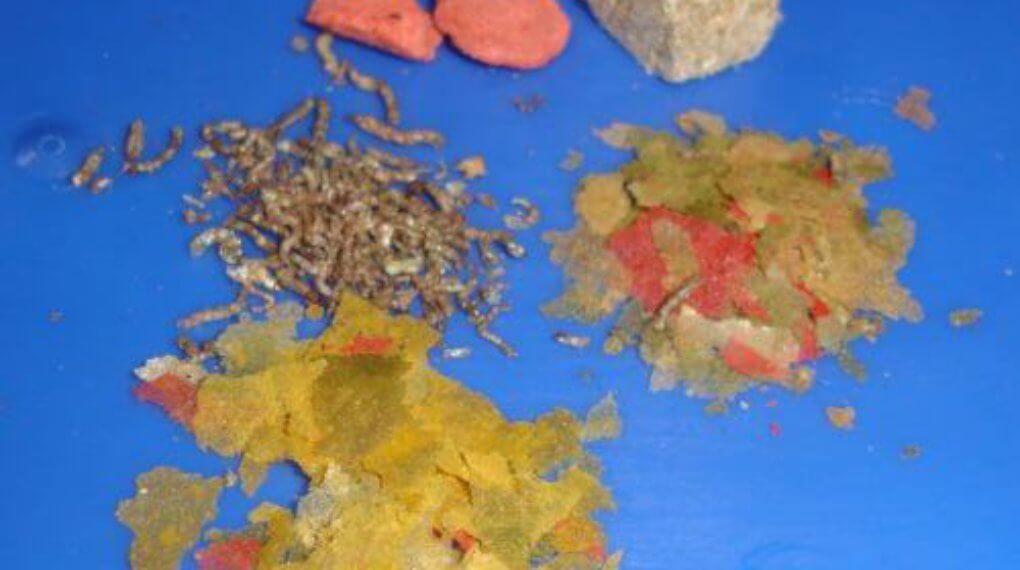A Comprehensive Overview Of The Different Types Of Goldfish Food
As is true with any pet, proper feeding is crucial to your goldfish’s health. Overfeeding, underfeeding, or using the wrong type of dry goldfish food is often the reason why some goldfish don’t live past several months. Read on if you want to learn how to choose the type of live goldfish food best suited for your fish and be knowledgeable on the basics of proper goldfish feeding.
Flakes are one of the most commonly used kinds of goldfish food. This is largely because flakes are easy for goldfish to consume. Additionally, flakes provide your goldfish with essential vitamins and minerals.
In addition to being easy to eat and containing an optimum nutrient level, flake dry goldfish food prevents your goldfish’s water from additional contamination. This is because flakes stay at the water surface long enough for your fish to eat the entire amount during a particular feeding session. As a result, less food sinks to the bottom where it will simply become a water pollutant.
You might also want to consider pellet goldfish food, which seems to be a popular choice for feeding larger goldfish, such as those kept in outdoor goldfish ponds. Japanese Koi is an example of these large fish. Pellets, just like flakes, are a great way to ensure that your goldfish receive a sufficient amount of nutrients on a daily basis.
When selecting pellet frozen and freeze-dried food, it is important to note that the fact that pellets sink to the bottom of the tank faster than flakes means this type of food could lead to added water pollution. The uneaten pellets decay and create bacteria that could be harmful to your goldfish.
In terms of feeding your goldfish, one tip to bear in mind is that goldfish cannot differentiate real goldfish food from objects or scraps that are not made for eating. Accordingly, be careful not to accidentally drop anything that is not food into your goldfish’s tank. If you inadvertently do, scoop it out right immediately.
Incorrectly feeding your goldfish wrong food or the wrong amount of food is one of the biggest reasons why so many goldfish don’t make it past a few months. It’s highly important that you know exactly what to feed your goldfish and the required amount.
Consumption
Goldfish will eat almost anything that looks like it deserves devouring including occasional goldfish treats. That means you have to make sure you keep any scraps of food not meant for fish, out of the bowl, tank or pond. One of the common accidents is during feeding time when the person involved happens to have some kind of food scraps on their hands that inevitably get passed into the water when placing in flakes or pellets.
This can have devastating consequences because as you may already know, goldfish are prone to a number of diseases and all it takes is an alien bacterium to enter the water and before you know it you fish could be laying upside down in the tank within a day or two.
Make sure you always sanitize your hands before feeding time. This will prevent any unwanted bacteria from entering your goldfish’s environment.
Flakes
Flakes have become a very popular food as for good reason. Most flake products contain the required amount of nutrient levels your fish need on a daily basis. They are also easy to eat and tend to stay surfaced long enough for your fish to consume the whole amount during feeding time.
This is important as with some other types of food that tend to sink to the bottom and rot for days, flakes stay afloat and usually is fully eaten before it has a chance to fall to the bottom of the tank.
One negative about flakes is that sometimes people get carried away when taking a portion to give to their fish. Goldfish don’t need a lot of food and on many occasions suffer from diseases closely linked to overeating. Make sure you don’t throw in too many flakes. A small finger-full will be enough.
Pellets
Pellets are the second most popular food for goldfish. They also contain the required amount of nutrients your fish need on a daily basis, but unlike flakes that stay afloat and easy to see, pellets tend to sink to the bottom after a while and can sometimes remain hidden and untouched, which will of course cause them to rot, intern creating unwanted bacterium in the water.
This usually means the tank water will become dirtier faster and must be changed more often than if you were feeding your goldfish flakes. It is much easier to determine how much pellet food you should feed your fish. I small finger-full usually results in the same amount of food to be placed in the tank daily.
Whatever it is, you will find that your goldfish are not fussy eaters. They have a wide array of food to choose from and they can eat quite a lot, which you would need to regulate. You will need to remember that they are temperate fish that do not need a diet high in protein. Goldfish are known as coldwater fish. These types of fish need a carbohydrate and vitamin-rich diet. Goldfish like humans need to heed the famous adage about being what they eat. Their diet determines the quality of their lives just as humans diets determine their overall health and well-being. If you feed your goldfish the food suggested in this article, you give them the best chance to thrive.

